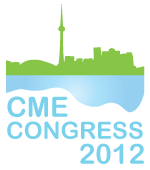Nancy A. Bowers, BSN, RN, MPH (American Society for Reproductive Medicine); Andrew R. La Barbera PhD, HCLD (American Society for Reproductive Medicine); Penelope Fenton, MA (American Society for Reproductive Medicine)
Purpose
This session will illustrate the American Society for Reproductive Medicine’s (ASRM) experience in the implementation of pre— and post-testing in a large, multi-session activity and integration of results into the planning process for future activities.
Methods
The ASRM implemented comprehensive pre— and post-testing for its 2009, 2010, and 2011 Annual Meeting Scientific Programs and Postgraduate Courses using clinical case-based questions. Each annual educational activity, including over 70 plenary lectures, symposia and interactive sessions and 21 postgraduate courses, had at least one question prepared by the faculty. Pre-tests were offered beginning 30 days prior to the educational activity and results relating specific educational needs of the learners were communicated to the faculty. Post-tests were administered beginning 30 days after the completion of the activity.
Results
pre— and post-test data were analyzed by the CME Committee and used to determine professional practice gaps and identify educational needs for physicians.
Applications and Future Directions
The presentation will include ASRM’s process for generating pre— and post-testing, analysis of results, determining clinical practice gaps and documentation of educational needs, and integration into planning for future ASRM educational activities.
Format
Lecture, Discussion, Question and Answer, Audience Response
Expected Outcomes for Participants
At the conclusion of this presentation, participants should be able to:
- Describe the process for generating pre— and post-testing for a large, multidisciplinary meeting.
- Use pre— and post-test data to identify physician practice gaps and determine physician learning needs using pre— and post-test data.
- Integrate practice gaps and educational needs into the planning process for future educational activities.
Declaration
None of the authors have a commercial or financial interest in the subject matter of this presentation.





